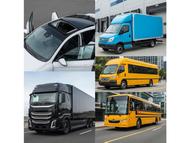US EV Future - ORIGINAL CONTENT
- By:
- Edward A. Reid Jr.
- Posted On:
- Aug 4, 2025 at 6:00 AM
- Category
- Energy Policy, Climate Change
The electric vehicle “market” in the US is a creature of the EPA 2009 Endangerment Finding, “unachievable” Corporate Average Fuel Economy standards, extremely restrictive NOx emission standards, the California Zero Emission Vehicle mandate, federal subsidies for EV purchase, federal funding for EV fueling infrastructure, federal loan guarantees for the manufacture of EVs and EV batteries, federal incentives for the purchase of EV school buses, transit buses, fire emergency vehicles and medium and heavy duty trucks, etc. Essentially these programs were designed to end the market for internal combustion engine (ICE) vehicles.
This incentivized “market” led to the introduction of a broad range of electric vehicles by numerous manufacturers, including medium and heavy duty trucks, transit and school buses, fire trucks and trash compactors. US EV sales peaked in the 4th quarter of 2024 at an 8.7% market share, but declined to 7.5% in the 1st quarter of 2025.
Each of these vehicle types has been plagued with spontaneous battery fires which propagate rapidly, burn extremely hot, are prone to explosion and are very difficult to extinguish. EVs have also had difficulty charging in extremely cold weather and lose significant range in both hot and cold weather. California has also asked EV owners not to recharge their vehicles in the late afternoon and early evening when grid demand is high due to grid capacity constraints.
The Congress has voted to terminate the California EV mandate waiver, which would also terminate “copycat” waivers in several other states. The Administration intends to eliminate the current EV subsidy and terminate the public vehicle fueling infrastructure program. The Administration is also reviewing the loan guarantees issued by the DOE Loan Office for vehicle and battery production facilities.
Electric vehicles will likely continue to be produced by the current EV manufacturers, though the number of vehicles produced will likely decrease as the subsidies and incentives are terminated. Several marginal EV manufacturers will likely terminate production and sale of their vehicles and file bankruptcy petitions, which would not bode well for the availability of parts and service for their vehicles. Proterra, the largest US transit bus manufacturer, has filed bankruptcy but is continuing operations. Several transit operators report buses out of service because of replacement parts availability issues.
The industry had great hopes for major sales into the rental vehicle market. However, Hertz has discontinued purchase of EVs for their rental fleets and has sold off many of their EVs at very low prices because of lack of rental customer interest or rental customer concerns about vehicle range and fueling infrastructure.
The termination of state EV mandates and the reductions of federal purchase incentives and charging infrastructure support will likely continue to reduce EV market share and the variety of EVs available. The market will likely shift towards hybrid and plug hybrid vehicles.
There has been strong resistance to the mandates for heavy duty trucks because of their high cost and driving range issues. It appears likely that, without mandates, the heavy-duty EV truck market will not develop.


